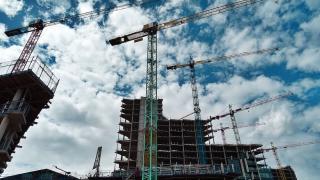
UK construction was a key component of Rishi Sunak’s 2020 budget announcement. The Building Safety Fund in particular was one of the most anticipated proposals. The purpose of this Fund is to remove unsafe cladding from the UK’s highrise buildings, in both the social and private sector.
In 2017, the Grenfell Tower disaster, which ended 72 lives, was due to unsafe cladding catching fire. Three years on, there have been a number of proposals to prevent a similar tragedy from occurring, none more so than the Building Safety Fund’s £1billion.
The fund is a step in the right direction when it comes to removing unsafe cladding from properties in the UK. Critics however, have pointed out shortfalls in the Building Safety Fund, with the £1bn for the removal of cladding being described as unrealistic. The criteria of the fund in determining which buildings are eligible for remedial work is thought to be too exclusive, with thousands of properties across the UK that have dangerous cladding failing to meet the criteria. Allow Drill Service to discuss the potential flaws of the Building Safety Fund:
More Investment is Needed:
Unite’s estimated costs of £20m to remove cladding from just 19 of their properties makes the government’s proposed £1bn look naive.
One year after the Grenfell disaster, in 2018, a figure of £400m was made available by the government to remove ACM (Aluminium Composite Material) cladding from social housing tower blocks. Then in 2019, a further £200m was made available to remove ACM cladding from buildings in the private sector too. Now in 2020, £1bn is the figure proposed by the Building Safety Fund.
Unite Students, who provide student accommodation and housing, have pledged to remove HPL (high-pressure laminate) cladding from their buildings. HPL is a material used for cladding which is as hazardous as ACM, and Unite Students have HPL on 19 of their buildings. They have estimated the cost of replacing this cladding will be £20m. It is possible that there are countless buildings across the UK with similar cladding, like Unite, with no awareness of how hazardous it is.
Unite’s estimated costs of £20m to remove cladding from just 19 of their properties makes the government’s proposed £1bn look naive. It is also possible there are plenty of buildings with dangerous cladding unaccounted for when this figure was decided.

Exclusive Criteria:
Rishi Sunak made it clear that only buildings over 18 metres tall are eligible for remediation work through the Building Safety Fund. This isn’t the only restriction which has received criticism. Only buildings with the most dangerous types of cladding are to be looked at.
Two of the most commonly used materials for cladding before the Grenfell Tower fire were APC (Aluminium Composite Material) and HPL. These are listed as Category 3 cladding materials, so they are amongst the most dangerous. There are cladding materials however which the Building Safety Fund doesn’t deem hazardous enough to receive remedial work. Before the Grenfell fire, ACM wasn’t thought to be dangerous. Refusing to replace other potentially cladding materials seems rash and dismissive from the government.
There are cladding materials however which the Building Safety Fund doesn’t deem hazardous enough to receive remedial work.
The current criteria for the Building Safety Fund also means buildings under 18 metres tall won’t be considered for Government remediation. A building 17m tall could have the most hazardous category 3 cladding, yet fail to be eligible for maintenance. It is also estimated there are considerably more buildings between 11m and 18m tall as opposed to above 18m. This criterion is excluding thousands of hazardous buildings across the UK from receiving remedial treatment.
The increased figure in the last 3 years for removing unsafe cladding from UK buildings is promising, yet it seems there is still some way to go. £1billion may seem like a substantial figure, yet when this is compared to Unite’s estimated costs for removing unsafe cladding from just 19 of their buildings, the government’s estimate looks naive. In fact, costs are thought to be closer to £10bn, rather than £1bn, as the UK has over 11,000 high-rise buildings with potentially dangerous cladding. There are also countless properties the fund deems ineligible for remedial work, as they aren’t tall enough, or they have a different, supposedly less hazardous type of cladding. In order for the Building Safety Fund to successfully remove hazardous cladding from UK properties, more investment is needed, and the criteria must be more inclusive.
Callum works for Drill Service. Operating for over 50 years, Drill Service has supplied companies in the manufacturing industry with a range of cutting tools. Keeping a constant eye on new industry developments and new technology, Drill Service has built up its reputation within the industry for excellent service and commitment to customers.
For more information, please visit www.drill-service.co.uk
Sources:
https://www.constructionenquirer.com/2020/02/26/student-rooms-developer…
https://www.devonshires.com/new-building-safety-fund-of-1bn-announced/
https://www.fia.uk.com/news/government-allocate-another-1bn-to-remove-a…